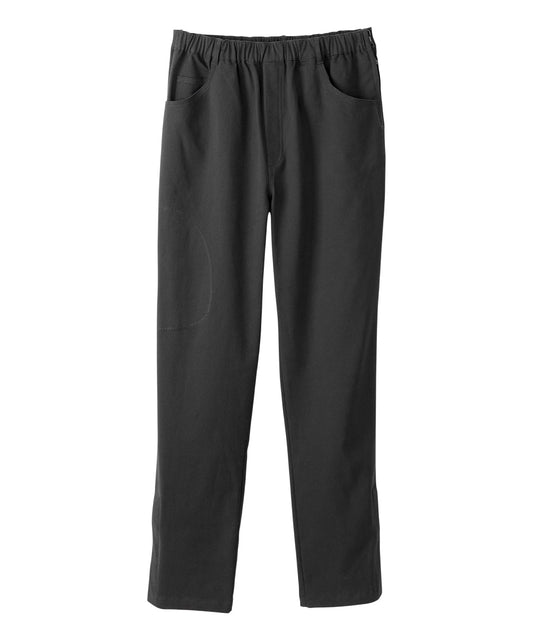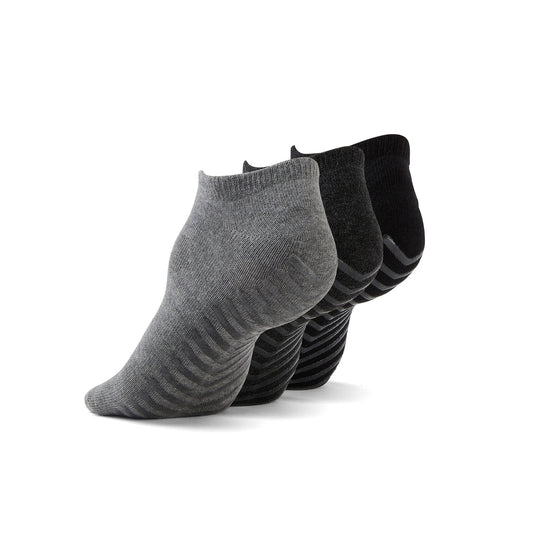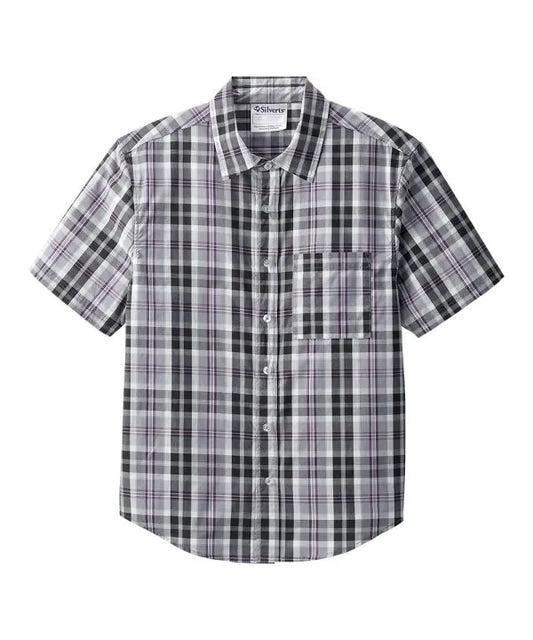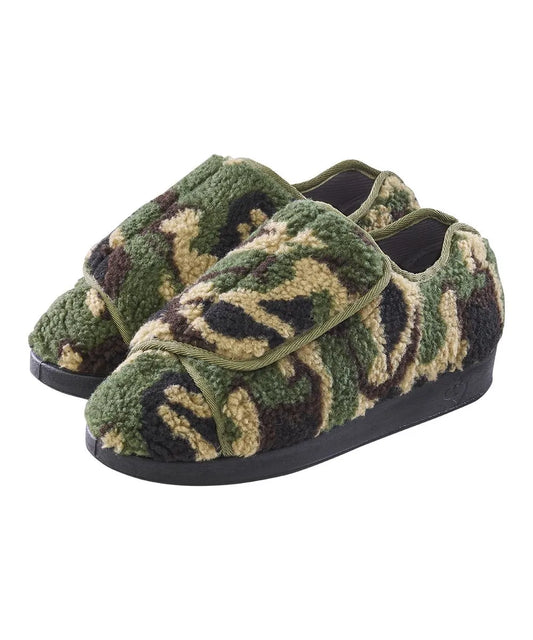Written by Eliza Gilani
Finding stylish, functional clothing that meets your needs without stretching your budget can be a challenge for most, especially when it comes to adaptive clothing. Designed to make dressing easier for individuals with disabilities, chronic illnesses, and mobility limitations, adaptive clothing often comes with a hefty price tag. But looking good and feeling comfortable shouldn't be a luxury reserved for those who can afford expensive styles and modifications. Adaptive clothing is for everyone and isn’t just about convenience, it’s about inclusivity and an individual's dignity and independence. More than just a practical solution, adaptive fashion is all about empowering people with disabilities to dress with confidence, express their style and navigate daily life with ease. Whether you’re seeking adaptive clothing for yourself or a loved one, or you’re simply curious about its benefits, this guide will explore everything you need to know.
How do you dress nice without breaking the bank?
Dressing well doesn’t have to mean spending a fortune. With the right strategies, you can build a stylish, functional wardrobe, whether you need adaptive clothing or not, without breaking the bank. Here are some practical tips to help you look great while keeping your expenses in check. Firstly, shop smart and intentionally seek sales. Many retailers offer discounts throughout the year which should be taken advantage of, especially during seasonal sales, the most popular are Black Friday and Back-to-School promotions among others. Besides shopping during these seasonal sales which are a great opportunity to score high-quality pieces at a fraction of the price, signing up for newsletters from your favourite brands can also give you early access to discounts and exclusive promo codes. This way people looking for adaptive clothing will get e-mail notified about exclusive deals and discounts and be among the first to know about them. Some retailers even offer first-time customer discounts or rewards programs that help you save over time.
Another strategy to save and still look stylish is to invest in versatile pieces. Instead of buying trendy items that will quickly go out of style, focus on versatile clothing that can be mixed and matched for multiple outfits. Neutral-coloured tops, comfortable adaptive jeans, and easy-to-layer clothing allow you to create different looks without needing a large wardrobe. For those who need adaptive clothing, prioritizing functionality alongside style is key. Look for pieces that work for different occasions, adaptive dress shirts are exemplary for this as they can be worn casually or professionally, or pants with adjustable waistbands that provide comfort throughout the day. Choosing quality over quantity ensures your wardrobe remains stylish and practical without frequent replacements.
At June Adaptive, the Men’s Long Sleeve Shirt with Magnetic Buttons is an outstanding versatile addition to your closet, perfect for casual or professional wear made from an ultra-soft tencel fabric to keep you comfortable throughout the day. As a first-time customer, you can also join the June Adaptive community for a free guide to disability grants and a surprise discount.

Can People Without Disabilities Wear Adaptive Clothing?
Absolutely! Adaptive clothing is designed to make dressing easier, but its benefits extend beyond individuals with disabilities to basically anyone, regardless of gender or age. Anyone can wear adaptive clothing, especially if they particularly value comfort, convenience, and functionality in their wardrobe
Delving into the features of adaptive clothing, such as magnetic closures, velcro fastenings, and elastic waistbands, they all serve the purpose of making getting dressed faster, easier and overall more efficient. People with disabilities reap the benefits of adaptive clothing the most, however, these designs can be tremendously helpful for people with temporary injuries, seniors, children, post-surgery recovering people, or even busy individuals who prefer hassle-free clothing options. For instance, magnetic button shirts eliminate the need for traditional buttoning, which can be a time-saver for anyone from the different demographics mentioned. Adaptive apparel is also becoming more and more popular among travelers and athletes who require cozy yet practical attire. They are ideal for lengthy flights, outdoor activities, or even regular commutes where comfort is crucial because of their stretchable, breathable materials and comfortable patterns.
Adaptive clothing is also renowned for its comfort and practicality. Often made with soft, stretchable fabrics that prioritize comfort, making them appealing to people who simply want more relaxed and breathable clothing. Tag-free patterns and seamless construction are examples of features that might lessen irritation, which is advantageous for people with sensory sensitivity as well as appealing to anyone who detests stiff fabrics or painful seams. Tag-free patterns and seamless construction are some notable features of adaptive clothing that might lessen irritation, which is advantageous for people with sensory sensitivity as well as appealing to anyone who detests stiff fabrics or painful seams.
Looking for a new pair of pants? At June Adaptive we have the Men’s Pull on Cargo Pants! Super-soft cotton twill pants with a fully elastic waistband in a classic silhouette. Easy Access magnetic fly opening to make trips to the washroom more efficient

Why Is Adaptive Clothing Generally So Expensive?
Although adaptive apparel is essential to increasing fashion accessibility for people with impairments, many people find it difficult to acquire due to its high cost. The cost of adaptive clothing is higher than that of regular clothes. The high price tag for adaptive clothing is for several reasons, including restricted market demand and production difficulties.
The main contributor to expensive adaptive clothing is the specialized design and production costs. Unlike traditional clothing, adaptive fashion requires unique design elements, such as magnetic closures, Velcro fastenings, hidden zippers, and adjustable features. These modifications call for further research and development, raising the complexity and expense of the production. Manufacturers need to ensure that the clothing is functional, durable, and comfortable for individuals with various mobility needs, which increases labour and material costs. With most production of adaptive clothing, there is user testing and collaboration specifically with people who have disabilities. Unlike mainstream fashion, which often follows seasonal trends, adaptive fashion must address real-world challenges, ensuring ease of use and practicality. Before the clothing even reaches the consumer, the cost is increased by this extra testing and research.
Large-scale apparel manufacture by mainstream fashion brands reduces their overall production costs. Conversely, because adaptive apparel is a specialized market, fewer pieces are made. Since economies of scale don’t apply in the same way, the cost per unit remains high. Additionally, fewer manufacturers specialize in adaptive clothing, leading to less competition and higher prices. The overall limited retail availability of adaptive clothing in the U.S. and Canada is also a major factor contributing to how expensive it is. Since adaptive clothing is not as widely available in major retail stores, customers usually have to rely on specialty brands or online shops. The lack of widespread distribution means fewer opportunities for discounts or lower pricing. Additionally, many adaptive brands are smaller businesses that do not have the financial resources to reduce prices as large fashion corporations do.
What Are the Examples of Adaptive Clothing?
Adaptive clothing includes a wide range of garments designed to make dressing easier and more comfortable for individuals with disabilities, mobility challenges, or medical needs. Let’s delve into some examples of adaptive clothing and how they can be utilized for efficiency. Examples include magnetic or Velcro-closure shirts that replace traditional buttons for easier fastening, open-back tops and dresses that simplify dressing for caregivers, and elastic-waist or side-zip pants that terminate the need for buttons and zippers. Wheelchair-friendly clothing features high-back pants and seamless designs for comfort, while easy-on shoes with Velcro or slip-on designs eliminate the need for laces. Sensory-friendly clothing removes tags and rough seams for those with sensitivities, and adaptive undergarments such as front-closure bras and Velcro-fastened underwear aid in independent dressing. In the medical space, post-surgery and medical-access clothing includes garments with hidden zippers and access points for feeding tubes or casts. These innovations ensure that adaptive fashion remains both functional and stylish, helping individuals dress with ease while maintaining their personal style
Tips for Building an Affordable Adaptive Wardrobe
Building an adaptive wardrobe doesn’t have to be expensive. Finding fashionable, useful apparel that fits your demands and stays within your budget is possible if you just use the right approach. Here’s some advice that should aid you in building an inexpensive wardrobe:
1. Prioritize essential pieces
Start by identifying the clothing items you need the most. Focus on versatile staples like adaptive shirts with magnetic closures, elastic-waist pants, and comfortable, easy-on shoes. Prioritizing must-have items ensures that you invest in clothing that provides the most value for your daily routine.
Men's Reversible Front Vest with Magnetic Closure | June Adaptive

Throw on this fresh and casual Reversible Puffer Vest in a snap! Ideal and essential for the Fall and Winter seasons, this easy-on blouse is the perfect blend between simple style and functionality, making it the perfect layering staple of your wardrobe.
2. Shop during sales and use discounts
Many brands, including those that specialize in adaptive clothing, offer seasonal discounts, clearance sales, and promo codes. Shopping during major sales events like Black Friday or back-to-school promotions can help you save significantly. Additionally, signing up for brand newsletters may give you access to exclusive discounts
3. Look for budget-friendly adaptive brands
While some adaptive clothing brands are expensive, others offer affordable options. June Adaptive carries adaptive clothing lines that are budget-conscious without compromising on quality. Shopping from here can help you get functional clothing at a lower price.
4. Seek out charities and assistance programs
Some nonprofit organizations and community groups offer free or low-cost adaptive clothing for individuals in need. Checking with local disability support programs, healthcare organizations, or social services may help you access affordable or even donated adaptive garments.
Adaptive clothing is more than just a practical necessity—it’s a step toward greater inclusivity, independence, and style for individuals with diverse needs. While adaptive fashion is often expensive, there are many ways to build a functional and stylish wardrobe without breaking the bank. From shopping smart and looking for discounts to modifying existing clothing and exploring secondhand options, affordability and accessibility can go hand in hand. And with the right approach, anyone can enjoy comfort, confidence, and style—without overspending.
Discover the abundance of free resources and disability grants available in the U.S. and Canada! Sign up for our email list below to receive a complimentary guide sent straight to your inbox. Enroll right away to take charge of your journey!
Find the mentioned products and more at JuneAdaptive.com. Subscribe to our newsletter at the bottom of this page for more content like this.















